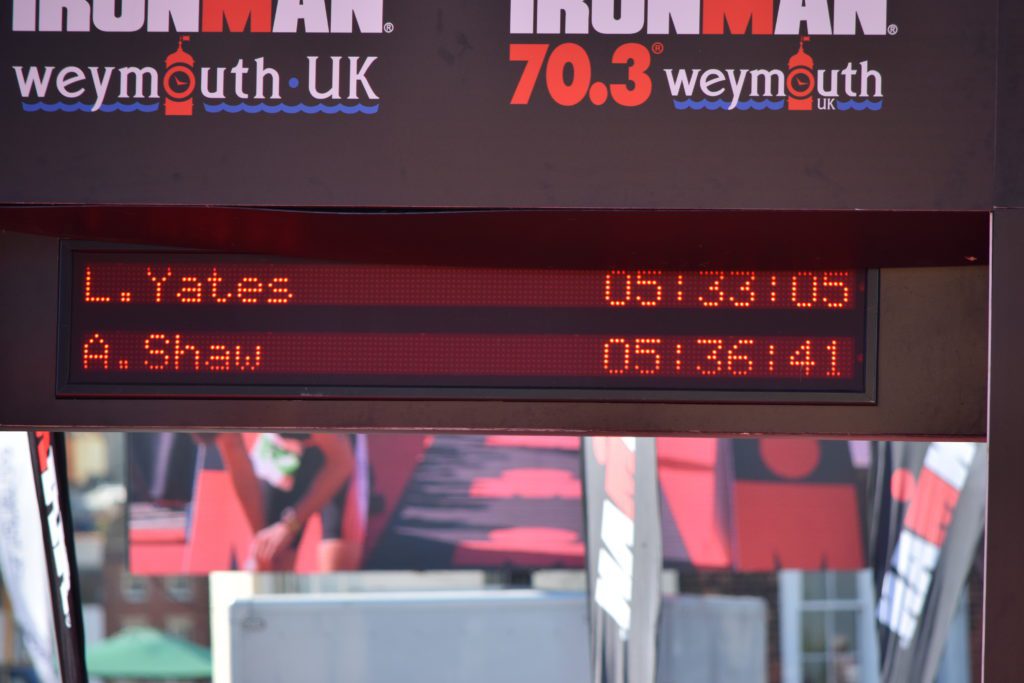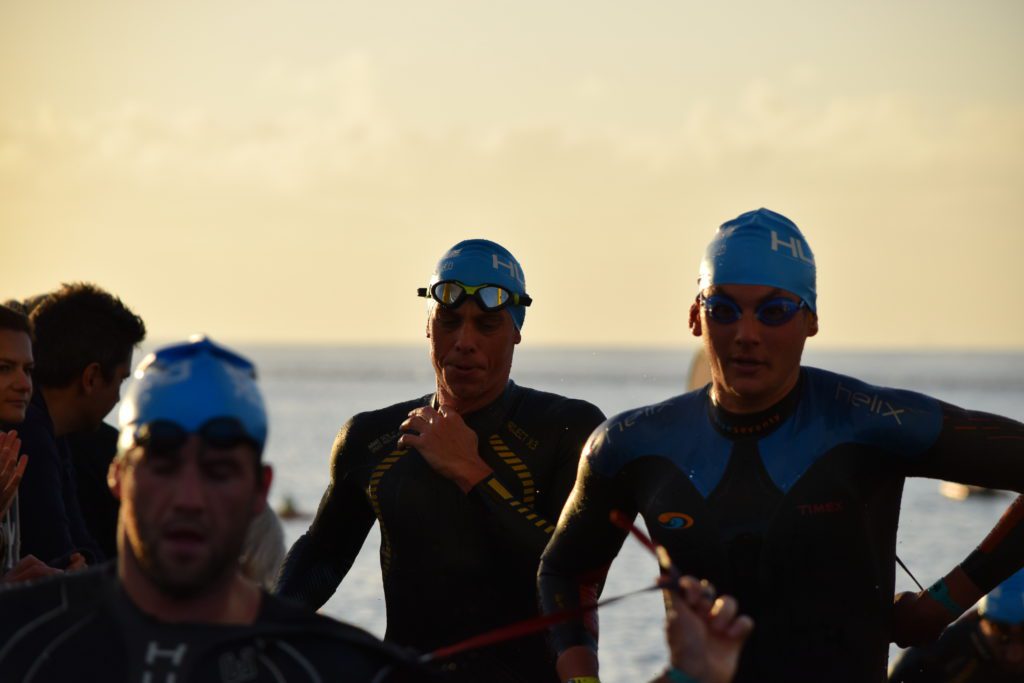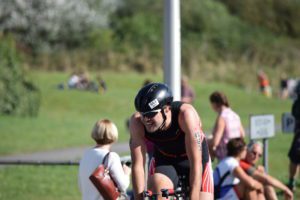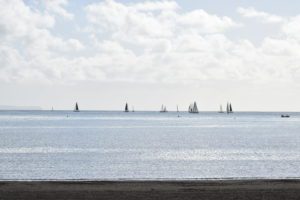My first half distance race: Ironman 70.3 Weymouth

This weekend TMC contributor Luke Yates headed home to the U.K. from Vancouver, to tackle Ironman 70.3 Weymouth. This was the first year the event was run by Ironman, having been acquired from Challenge in 2015. Yates shares his thoughts on the race and recaps his own personal experience racing a half distance for the first time.
Weymouth is situated on the south coast of England and is a beautiful, traditional fishing town. It’s a wonderful part of the country, worthy of a visit even without the allure of tackling a half-Ironman.
The race itself was superbly organized. With full and half-Ironman distance races running simultaneously — the first time this has been done in Europe — there was plenty of potential for confusion. Aside from a couple of glitches with race guides, it all ran smoothly.
Sunday morning brought clear skies and a spectacular sunrise over the English Channel. Weymouth played host to the Olympic sailing at London 2012 and the swim leg was a one loop triangle in the clean, calm bay. The rolling start worked well, and I picked 38 minutes minutes for my predicted time. I have been working hard on my swimming this summer, mainly at the wonderful Kits Pool in Vancouver, and had high hopes for a good start to the day.
I felt brilliant as I charged across the timing mat and hit the water. The water was cool and clear, and conditions were perfect. Sighting was easy with just two turns, and I hit a fast rhythm straight away. I barely let up for the whole swim leg and emerged from the water in 35:59. The swim was a huge positive from my day and I’m delighted with the progress I’ve made this year.
The first half of the bike gradually gained elevation with some very testing hills and technical turns. I reached the 45km point feeling great, but with one incident causing a little frustration. Through one particularly tricky pair of turns, I slowed sensibly and made the second corner no problem, ready to power away. Unfortunately, the rider ahead of me wasn’t so controlled and wiped out right in my path. I had no option but to bail onto the grass verge and into the hedge. I was unhurt, but left a little shaken and annoyed at the lost time.
I soon got back up to speed and kept going. With so many rider on the course, drafting was impossible to completely avoid but I was really impressed with the efforts of most athletes to avoid it and the common sense marshalling by race officials. I just don’t understand people that clearly and deliberately draft, and called one guy out on it. It’s cheating, plain and simple.
The second half of the course headed back to the coast, with some fast descents and sharp turns. I was just outside my target pace for a 2:45 bike leg, but my pace was picking up rapidly. With 10km I came to a fork in the road and the riders ahead of me flew through to the left and took off down a very steep hill. As I followed them through I noticed a sign pointing right. By the time I could stop I was well down the hill and in a huge gear. I ran part of the way back up until it was flat enough to change the gear down and get back to the course. There was a marshall at the junction and I told him that a number of people had gone the wrong way but he didn’t really seem to care. I was disappointed that he hadn’t made more of an effort to point out the correct direction. It was my fault, 100%, but he is there because it is a potential problem and with athletes pushing hard, he could have been far more active in his efforts.
My impromptu run had the unfortunate side-effect of setting off cramp in my quads in both legs. I entered T2 having completed the bike course in 2:54. The organisers announced that the bike was slightly longer than 90 km and my slight detour didn’t help. I was annoyed to have let about five minutes slip away through silly mistakes, but more than anything, the cramp was fast becoming a problem. I took on some salt tablets but by the first aid station on the run course, I had to stop and stretch. This helped and I soon found a reasonable pace and settled in for the grind. The run was two and a half loops of a very flat course along the beach and through the town itself. The support was great but as I approached halfway, my legs simply gave up.
I just couldn’t run any more. For a few kilometres I threw myself a pity party in my head. Everything hurt, especially my knee, which I seriously injured in a skiing accident a few years ago. I pulled myself together for the last lap at least and I battled through.
I crossed the finish line in a time of 5:33:05 with a 1:54 half-marathon. I’m proud of myself and happy to have finished, but a little disappointed with my time. The step-up to this distance from Olympic felt huge. I’m delighted with my swim and bike, including the way I dealt with the setbacks, but the difficulty of running after a ride of that distance and at race effort, really hit me hard.
Weymouth was a stunning setting for the event and I couldn’t recommend it highly enough as a destination race. The swim is wonderful and the bike course is challenging but fair. The run is flat and well supported, and the transitions were well organized.
There was a strong European pro field in the 70.3 race, with Harry Wiltshire and Emma Pallant, both of Great Britain, taking home the inaugural Weymouth 70.3 titles




































